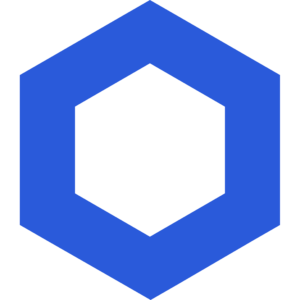Chainlink: The Middleware Connecting All of DeFi
Chainlink at a Glance
The rise of blockchain technology has led to an increasing number of developers flocking to the industry to explore the uncharted territories blockchain has to offer. This influx created exposed bottlenecks in the infrastructural needs for blockchain developers to build robust applications on top of blockchain networks, like Ethereum. Blockchains excelled in exchanging value over networks securely and efficiently, but the ability to communicate with off-chain systems or fetch off-chain data was missing. This included information such as sports data, weather data, medical data, data for traditional financial assets, price feeds, and other off-chain computations.
Chainlink was developed in 2017 by Sergey Nazarov and Steve Ellis. Originally developed to help reduce bottlenecks in the Ethereum ecosystem, it was developed with the foresight of being blockchain-agnostic. This flexibility has allowed Chainlink to be a key driver of any blockchain ecosystem.
By ensuring maximum security, decentralization, and validity of transactions for the network, this inhibits blockchains’ ability to connect to external resources. An underlying limitation of smart contracts is that they lack connectivity to off-chain data and systems. Chainlink pioneered a tamper-resistant system that allows blockchains to effectively communicate with off-chain data and events for any smart contract. This communication requires an additional piece of infrastructure to manage and facilitate this bridge of off-chain data and systems onto any blockchain that supports smart contracts. This middleware between the two different environments was referred to as an oracle.
What are Oracles, and Why are they Important?
Chainlink Oracles are a key component to the overall functionality of Web3 and DeFi. Blockchains that utilize centralized entities for off-chain data create a single point of failure which can be detrimental to a blockchain ecosystem. One of the most used assets in crypto is stablecoins pegged to the US dollar. For blockchains to have an accurate price feed on the US dollar, they need access to external data from reputable sources with this information. Chainlink developed a solution to prevent centralized points of failure by creating DONs which introduce multiple layers of decentralization.
This demand for connectivity to off-chain systems was the driving force behind the creation of Chainlink. At the foundation of Chainlink are Decentralized Oracle Networks (DONs), which are maintained by a Committee of Chainlink oracles. The purpose of DONs is to help extend and enrich the capabilities of smart contracts on any blockchain that has smart contract functionality. By providing resources such as networking, storage, and computation, DONs must do so in a manner that has strong confidentiality, integrity, and accountability, as well as available properties. The structural design of DONs allows them to be compatible with any blockchain that supports smart contracts.
FEATURED EDUCATION
DeFi 101: A Guide to Decentralized Finance
Decentralized Finance, or DeFi, has been rapidly gaining traction amongst the investment community. DeFi protocols, like Solana, Chainlink, or Uniswap, have real-world utility (and revenues) that are quickly displacing their traditional counterparts that require intermediaries to function.
In this digital resource, we’ll cover:




